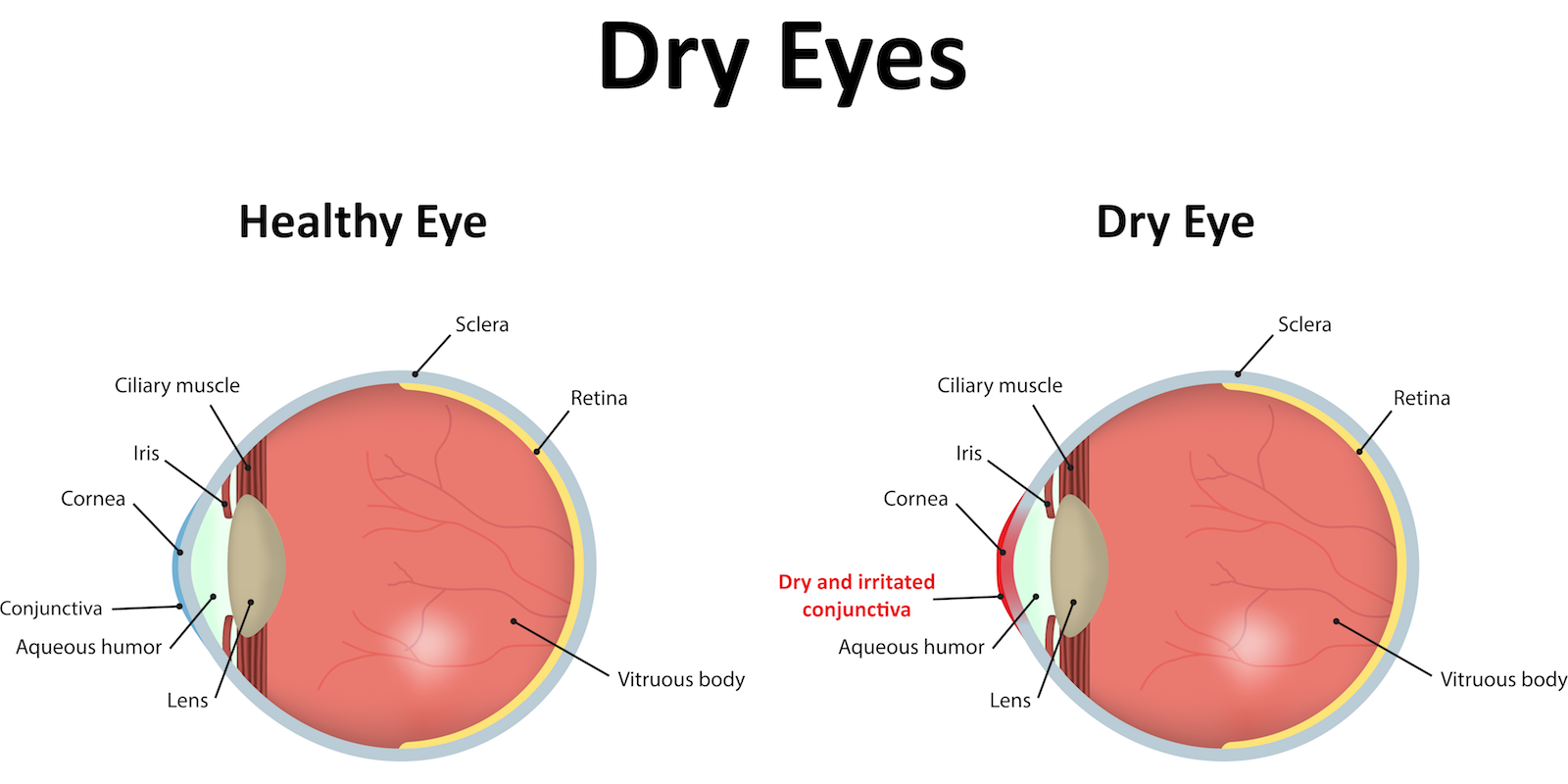Eye diseases and conditions
Dry Eye Syndrome

Dry eye syndrome is a very common ocular condition, especially in a dry environment like Central Oregon. There are two types of tears produced in eye. The first is called basal tear secretion, which is the constant, low-level moisture produce by the eye. The second type is called reflexive tearing, which occurs when the eye waters in response to an irritant, such as allergens, a foreign body, wind, smoke, or the surface inflammation that comes with dry eye. When your eyes don’t produce enough basal tears, dry eye occurs. Symptoms of dry eye are burning, grittiness, mucous discharge, excess tearing, redness, and intermittent blurry vision. Dry eye tends to be exacerbated by increasing age (especially post-menopausal women), contact lens wear, some systemic diseases (Sjogren’s, rheumatoid arthritis), and certain medications (antihistamines, diuretics, anti-depressants, and glaucoma eye drops, to name a few).
There are several treatment options for dry eye syndrome. The most basic therapy is the use of artificial tears. These drops are over-the-counter and will lubricate your eyes if they lack moisture. Artificial tears are most effective when used on a consistent, daily basis, depending on the severity of your symptoms. Preservative-free artificial tears should be used by patients with sensitive eyes or who experience burning with the use of standard tears. With moderate dry eye symptoms, you should aim for instilling artificial tears four times daily. Warm compresses on the eyelids for a few minutes a day can also help relieve dry eye symptoms. The use of a humidifier in your home or supplementing your diet with omega 3 (found in fish oil or flaxseed) can also aid in treating dry eye. In more severe cases, punctual plugs may be inserted into the tear duct found on the lower inner eyelid. These are designed to block your tear duct, where the tears drain out of your eye. This keeps the tears in your eye longer, which allows your eye to stay more hydrated. There is also a prescription medication called Restasis, which helps to reduce the chronic inflammation that occurs with dry eye. Whatever your dry eye symptoms may be, your eye care provider can help guide you to which treatment is best for you.

